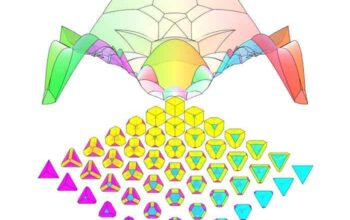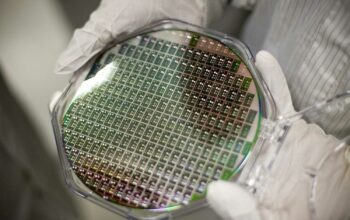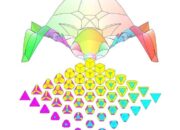Wind energy has emerged as a critical component in the pursuit of sustainable solutions to the global energy crisis. As humanity increasingly seeks alternatives to fossil fuels, innovative designs for wind farms have gained traction. Intriguingly, the study of marine life, especially the dynamics of fish, has been found to inspire advancements in this field. Observing the grace and functionality of fish in their aquatic environments leads to a deeper exploration of biomechanical principles and the philosophies of natural design.
The morphology of fish—characterized by streamlined bodies and fins—has long fascinated biologists and engineers alike. These adaptations are not merely aesthetic; they serve specific aerodynamic purposes. Fish have evolved to navigate their complex underwater habitats efficiently, maneuvering through currents and evading predators. By mimicking these biological principles, engineers can develop wind turbine designs that enhance efficiency and performance. Fish-like structures can potentially maximize energy capture while minimizing turbulence, thereby optimizing energy output across varying wind conditions.
In essence, fish exemplify an evolutionary refinement that has occurred over millions of years. The implications for wind farm design are profound. For instance, incorporating fin-like rotor blades could improve the energy capture coefficient compared to traditional turbine designs. The idea of using multi-directional blades that can adjust to changing wind patterns mirrors the adaptive fin movements of fish, which allow them to navigate diverse environments fluidly.
This nexus between biology and engineering raises philosophical questions about the relationship between nature and technology. It underscores a fundamental insight: successful design often mimics elements found in nature. The concept of biomimicry, or the emulation of nature’s time-tested patterns and strategies, serves as a base for technological innovation. Drawing inspiration from the complex interplay between fish and their environments invites a more harmonious relationship between human-made structures and natural ecosystems.
Moreover, the buoyant efficiency observed in aquatic life can transcend mere physical design considerations. The aggregation behaviors noted in schooling fish could inform the layout of wind farms. Strategic arrangements that consider aerodynamic interactions between turbines can lead to collective efficiency, akin to how fish schools reduce drag by optimizing their spatial configuration. This cooperative strategy may provide a blueprint for maximizing the energy output of wind farms while minimizing land use.
Another fascinating aspect of fish that could invigorate wind turbine design is their diverse swimming modalities. Some species exhibit oscillatory movements, akin to how conventional wind turbines operate. However, others—such as the undulating bodies of certain eels—embrace continuous motion. This versatility can inspire alternative mechanical approaches for wind turbines, leading to developments such as flexible or oscillating blades that adapt dynamically to wind conditions, potentially leading to increased durability and efficiency.
In addition, the sensory systems found in fish provide further avenues for innovation. Fish utilize a range of sensory modalities to detect environmental changes, including hydrodynamic forces that inform their movement. Incorporating similar sensory technology in wind turbines could enhance their performance. Real-time data collection related to wind flow, turbulence, and other environmental parameters can enable adaptive control systems that optimize energy production continuously. This intelligent responsiveness reflects a shift toward advanced, self-regulating technologies in energy generation.
The fascination with fish as a model for wind farm design persists not only because of their aerodynamics but also due to their broader ecological significance. Fish play a vital role in aquatic ecosystems, contributing to nutrient cycling and energy flow. Similarly, wind farms can function as ecological entities, fostering biodiversity while producing renewable energy. The design of wind farms that integrates elements of marine habitats—such as artificial reefs or platforms that support marine life—could yield dual benefits: generating energy and enhancing local ecosystems.
Despite the promising possibilities, there remain challenges to be addressed in the quest to integrate biological insights into mechanical designs. Understanding the complexities of fluid dynamics in both fish locomotion and wind turbine efficiency necessitates interdisciplinary research. Collaborative efforts spanning biology, engineering, and environmental science will be paramount in overcoming these barriers. This integrative approach can ensure that innovations are not only efficient but also ecologically sound, appealing to the growing demand for sustainable development.
The trajectory of incorporating inspiration from fish into wind farm design illustrates a broader paradigm shift in technology—a transition from anthropocentric to ecocentric approaches. By recognizing the inherent wisdom inherent within natural systems, technology can evolve into a more symbiotic relationship with the environment. As engineers and designers continue to draw ideas from the aquatic world, the lines between nature and human ingenuity will blur, heralding a future where renewable energy generation is as fluid and harmonious as the currents of the ocean.
In conclusion, the inspiration drawn from fish exemplifies a larger discourse surrounding innovation, sustainability, and the myriad ways in which nature can inform human-made solutions. The intersection of biological observation and engineering precision encapsulates the challenge and opportunity present in modern wind energy development. By embracing the complexities of natural systems, the wind power sector stands poised to achieve remarkable advancements that benefit both human society and the planet.






